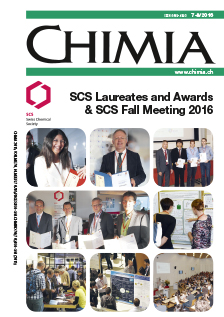Structure–Property Relations in Polymer:Fullerene Blends for Organic Solar Cells
DOI:
https://doi.org/10.2533/chimia.2016.512Keywords:
Charge generation, Charge transport, Microstructure, Organic solar cells, Ultrafast spectroscopyAbstract
Organic solar cells consist of thin films combining an electron donor (often a conjugated polymer) with an electron acceptor (often a fullerene derivative), in a blend commonly referred to as bulk heterojunction material. Charge separation between the donor and the acceptor leads to the generation of carriers, which can be extracted from photovoltaic devices in the form of photocurrent. The generation mechanism of free, extractable charges has caused a lot of controversial discussion in literature. Our research has shown that all the steps involved in charge generation are strongly dependent on the arrangement of the donor and the acceptor (i.e. the structure) of the bulk heterojunction.Downloads
Published
2016-08-24
Issue
Section
Scientific Articles
License
Copyright (c) 2016 Swiss Chemical Society

This work is licensed under a Creative Commons Attribution-NonCommercial 4.0 International License.
How to Cite
[1]
N. Banerji, Chimia 2016, 70, 512, DOI: 10.2533/chimia.2016.512.







